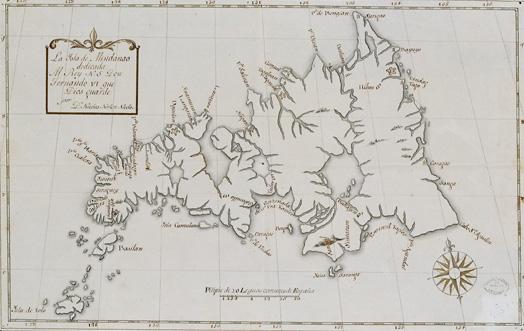|
Paruparo Mio
''Paruparo mio'' is a butterfly of the family Lycaenidae first described by Hisakazu Hayashi, Heinz G. Schroeder and Colin G. Treadaway in 1984. It is endemic to the Philippine island of Mindanao Mindanao ( ) is the List of islands of the Philippines, second-largest island in the Philippines, after Luzon, and List of islands by population, seventh-most populous island in the world. Located in the southern region of the archipelago, the .... Forewing length: 16–17 mm. It is a quite rare species and the threat category is "vulnerable". The specific name is dedicated to the eldest daughter of the first author. References * , 1984: New lycaenid butterflies from the Philippines (Insecta: Lepidoptera: Lycaenidae). ''Senckenbergiana Biologica'' 65 (1/2): 29–41. * , 1995: Checklisit of the butterflies of the Philippine Islands (Lepidoptera: Rhopalocera). ''Nachrichten des Entomologischen Vereins Apollo'', Suppl. 14: 7–118. * * , 2012: Revised checklist of the butterfli ... [...More Info...] [...Related Items...] OR: [Wikipedia] [Google] [Baidu] |
Butterfly
Butterflies are winged insects from the lepidopteran superfamily Papilionoidea, characterized by large, often brightly coloured wings that often fold together when at rest, and a conspicuous, fluttering flight. The oldest butterfly fossils have been dated to the Paleocene, about 56 million years ago, though molecular evidence suggests that they likely originated in the Cretaceous. Butterflies have a four-stage life cycle, and like other holometabolous insects they undergo complete metamorphosis. Winged adults lay eggs on the food plant on which their larvae, known as caterpillars, will feed. The caterpillars grow, sometimes very rapidly, and when fully developed, pupate in a chrysalis. When metamorphosis is complete, the pupal skin splits, the adult insect climbs out, expands its wings to dry, and flies off. Some butterflies, especially in the tropics, have several generations in a year, while others have a single generation, and a few in cold locations may take s ... [...More Info...] [...Related Items...] OR: [Wikipedia] [Google] [Baidu] |
Lycaenidae
Lycaenidae is the second-largest family (biology), family of butterflies (behind Nymphalidae, brush-footed butterflies), with over 6,000 species worldwide, whose members are also called gossamer-winged butterflies. They constitute about 30% of the known butterfly species. The family comprises seven subfamilies, including the blues (Polyommatinae), the coppers (Lycaeninae), the hairstreaks (Theclinae), and the harvesters (Miletinae). Description, food, and life cycle Adults are small, under 5 cm usually, and brightly coloured, sometimes with a metallic gloss. Lycaenidae wings are generally blue or green. More than half of these butterflies depend on ants in some way. Larvae are often flattened rather than cylindrical, with glands that may produce secretions that attract and subdue ants. Their cuticles tend to be thickened. Some larvae are capable of producing vibrations and low sounds that are transmitted through the substrates they inhabit. They use these sounds to commun ... [...More Info...] [...Related Items...] OR: [Wikipedia] [Google] [Baidu] |
Species Description
A species description is a formal scientific description of a newly encountered species, typically articulated through a scientific publication. Its purpose is to provide a clear description of a new species of organism and explain how it differs from species that have been previously described or related species. For a species to be considered valid, a species description must follow established guidelines and naming conventions dictated by relevant nomenclature codes. These include the International Code of Zoological Nomenclature (ICZN) for animals, the International Code of Nomenclature for algae, fungi, and plants (ICN) for plants, and the International Committee on Taxonomy of Viruses (ICTV) for viruses. A species description often includes photographs or other illustrations of type material and information regarding where this material is deposited. The publication in which the species is described gives the new species a formal scientific name. Some 1.9 million ... [...More Info...] [...Related Items...] OR: [Wikipedia] [Google] [Baidu] |
Mindanao
Mindanao ( ) is the List of islands of the Philippines, second-largest island in the Philippines, after Luzon, and List of islands by population, seventh-most populous island in the world. Located in the southern region of the archipelago, the island is part of an island group of the same name that also includes its adjacent islands, notably the Sulu Archipelago. According to the 2020 census, Mindanao had a population of 26,252,442, while the entire island group had an estimated population of 27,021,036. Mindanao is divided into six administrative regions: the Zamboanga Peninsula, Northern Mindanao, the Caraga region, the Davao Region, Davao region, Soccsksargen, and the autonomous region of Bangsamoro. According to the 2020 census, Davao City is the most populous city on the island, with 1,776,949 people, followed by Zamboanga City (pop. 977,234), Cagayan de Oro (pop. 728,402), General Santos (pop. 697,315), Butuan (pop. 372,910), Iligan (pop. 363,115) and Cotabato City (pop. ... [...More Info...] [...Related Items...] OR: [Wikipedia] [Google] [Baidu] |
Butterflies Described In 1984
Butterflies are winged insects from the lepidopteran superfamily Papilionoidea, characterized by large, often brightly coloured wings that often fold together when at rest, and a conspicuous, fluttering flight. The oldest butterfly fossils have been dated to the Paleocene, about 56 million years ago, though molecular evidence suggests that they likely originated in the Cretaceous. Butterflies have a four-stage life cycle, and like other holometabolous insects they undergo complete metamorphosis. Winged adults lay eggs on the food plant on which their larvae, known as caterpillars, will feed. The caterpillars grow, sometimes very rapidly, and when fully developed, pupate in a chrysalis. When metamorphosis is complete, the pupal skin splits, the adult insect climbs out, expands its wings to dry, and flies off. Some butterflies, especially in the tropics, have several generations in a year, while others have a single generation, and a few in cold locations may take several ... [...More Info...] [...Related Items...] OR: [Wikipedia] [Google] [Baidu] |


